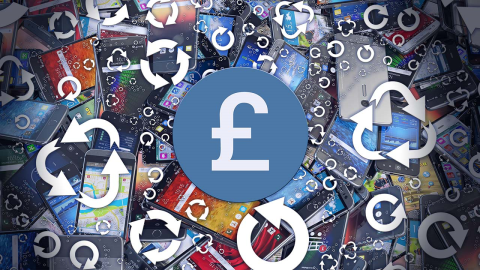

Samsung Pay has today gone live across the UK, giving users yet another contactless payment service with which to purchase goods and services.
Samsung has today launched its contactless payment service in the UK, a year after the release of Android Pay and two years after Apple Pay. The new payment system allows users to purchase goods and services with Samsung devices including the Galaxy S8, S8+, A3 and A5 (2017), J series (2017). Wondering how it stacks up against the competition? Let’s take a look.
Android Pay
Initially starting life as Google Wallet, the app evolved last year after the company bought Softcard, a payment method developed in a joint venture between AT&T, T-Mobile and Verizon. The app supports any Android device running KitKat 4.4 or higher. The app supports most banks in the USA and has been slowly rolling out to the rest of the world since September 11th 2015. Currently, it’s available in the United Kingdom, Singapore, Australia, Hong Kong, Poland, New Zealand, Republic of Ireland, Japan, and Belgium. Supporting Near Field Communication (NFC) as it’s only payment method, the store will need newer card readers which accept this and mobile wallet. Cards are added to the wallet app by using the built-in smartphone camera. Credit card information is not used for the transaction, with a virtual account number used to identify the payment senders and recipients. Thanks to its integration with the underlying Android OS, it’s also very easy to completely wipe all financial information remotely, should the handset be stolen. The app runs in the background and doesn’t need to be opened for transactions.
Apple Pay
If we were to compare Apple Pay and Android Pay, you wouldn’t be surprised to hear that they both carry many similarities. From the ability to make payments using only NFC, to the app running in the background, they both work almost the same. The only major difference is that Apple Pay requires fingerprint authentication before a transaction can be processed, whereas Android Pay can be set up so things are done automatically. Transactions are made using an account number much like Android Pay, eliminating the chance of card details being intercepted. Apple pay has an advantage of being the most widely adopted wallet service of the three, with more support from banks, retailers and credit card partners than either of the competition.
Samsung Pay
Samsung Pay is alternative to the big two, with support from over 650 banks and credit unions worldwide. Users who download the app will be presented with an electronic wallet. This supports any qualifying Visa, Mastercard or American Express credit cards. The big advantage of Samsung Pay is backwards compatibility, as the service also supports older magnetic secure transmission (MST) technology. The majority of Europe now uses chip-and-pin or contactless methods, however the feature is perfect for countries like the United States, where MST is still used heavily. There’s also several security features which protect the user and take advantage of the latest Samsung handsets. For example, with the S8 range users have the option to authorise payments with the iris scanner. Owners of lesser Samsung handsets can use a PIN code or the fingerprint sensor for authentication. Credit Card information is never used for transactions; instead a digital ‘token’ is used. Developed by Mastercard, the technology will generate a unique digital ‘token’ when a device and card is registered. This is also backed up by Samsung Knox, the Korean manufacturer’s internal security software. The limiting factor of Samsung Pay lies in who can use it. Available only on select Samsung handsets, you’ll need to jump into the company ecosystem to enjoy the feature.




